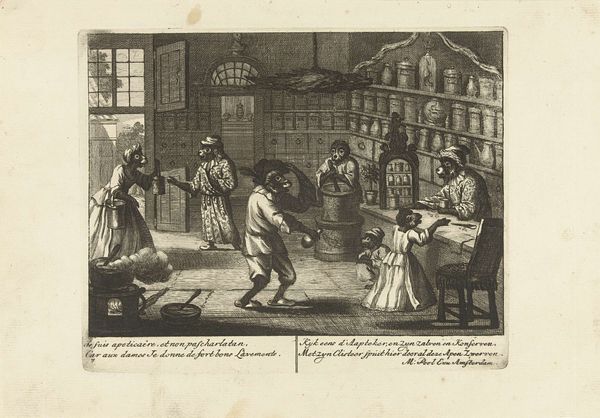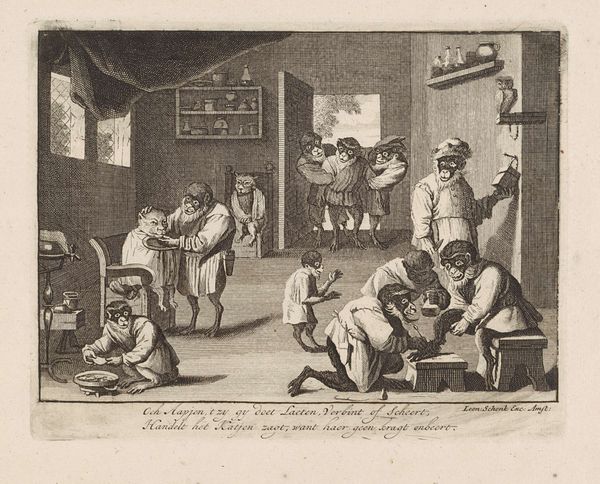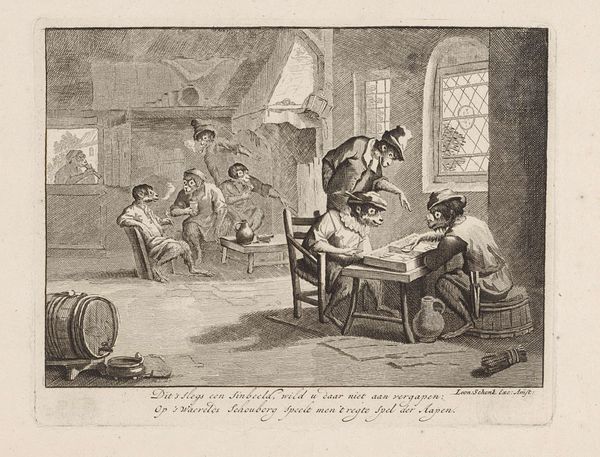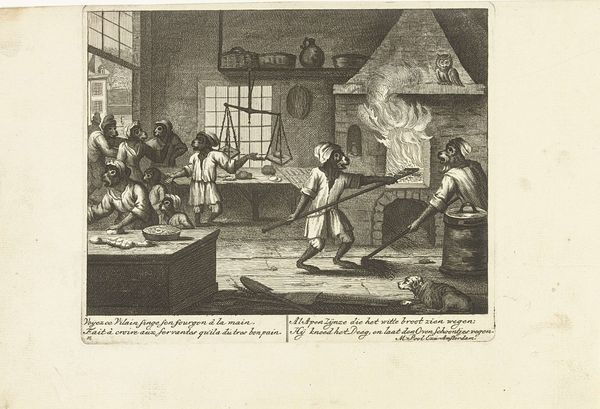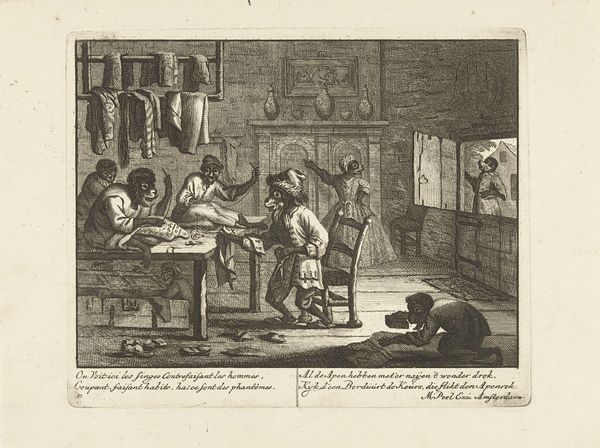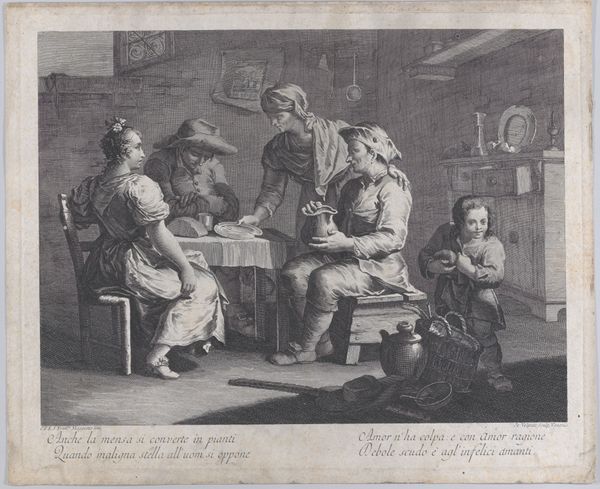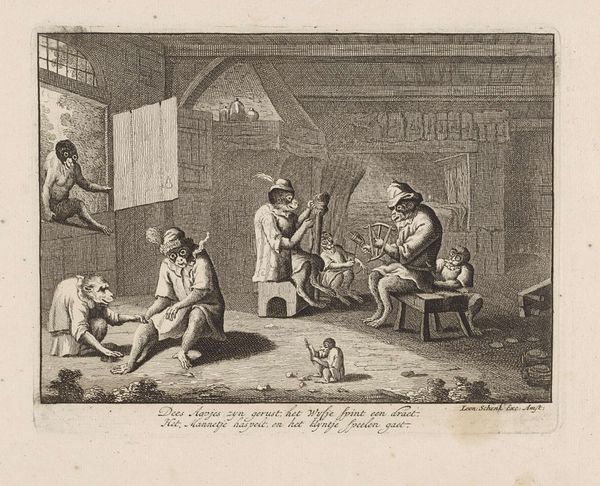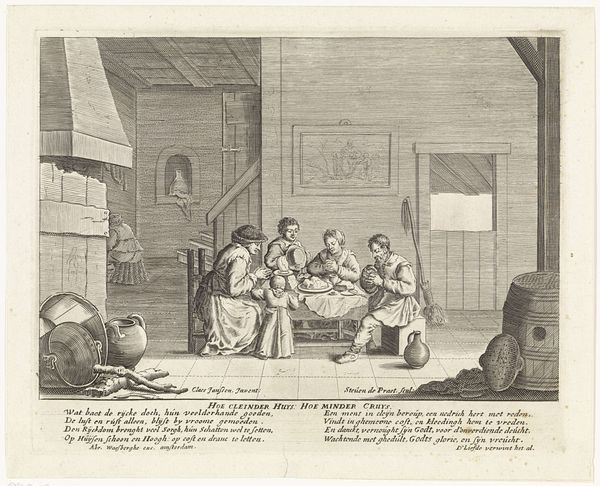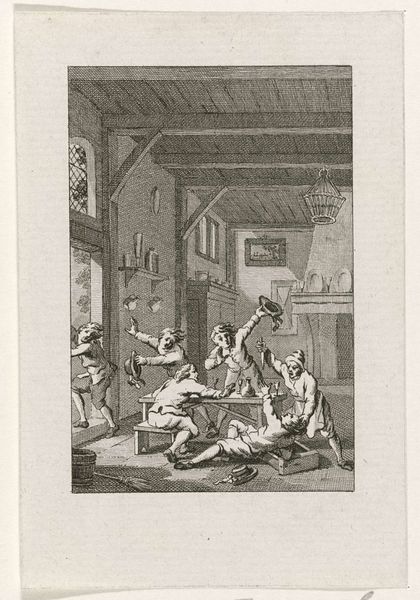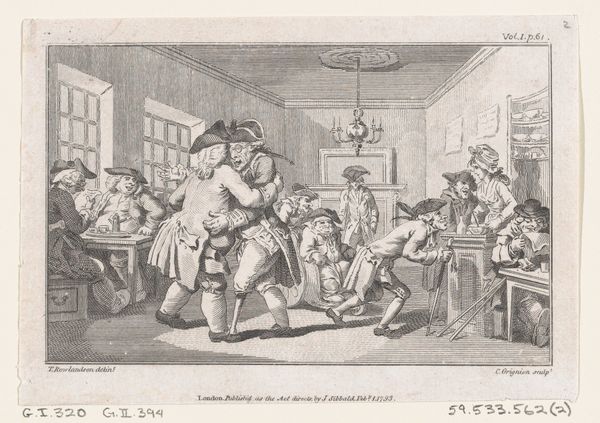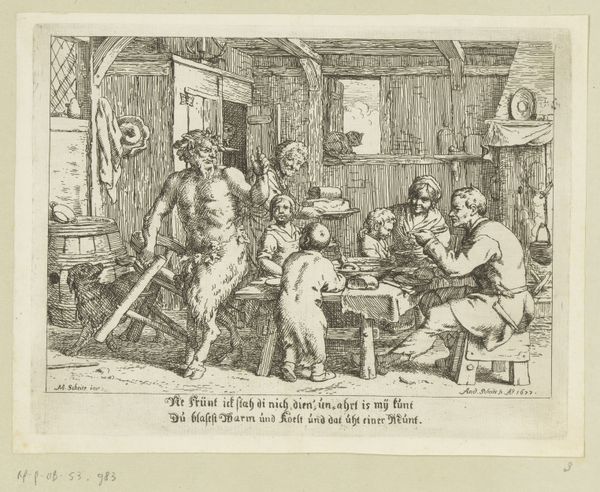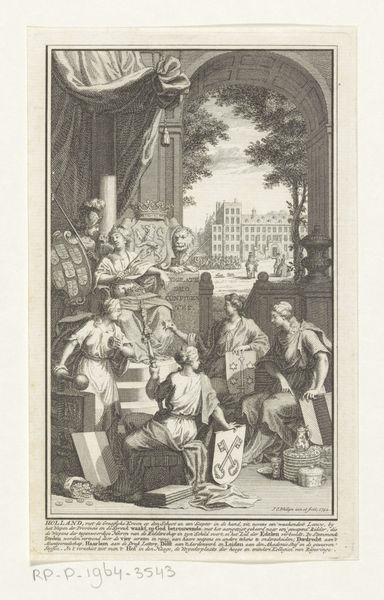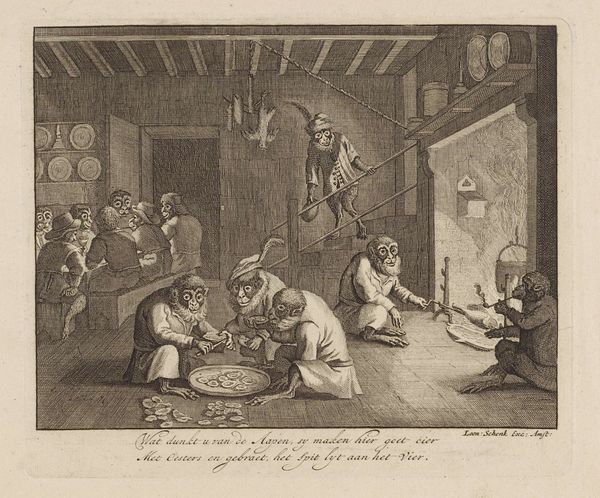
#
aged paper
#
light pencil work
#
photo restoration
#
parchment
#
old engraving style
#
archive photography
#
personal sketchbook
#
historical photography
#
journal
#
old-timey
Dimensions: height 166 mm, width 203 mm
Copyright: Rijks Museum: Open Domain
Editor: We're looking at "Apen als schoenlappers" or "Monkeys as Cobblers," made around 1720 by Matthijs Pool. It's a detailed engraving depicting monkeys in a workshop setting, making and repairing shoes. The overall feeling is quite satirical, almost like a comedic stage play. What do you see in this piece? Curator: Immediately, I’m drawn to the way this image utilizes the trope of monkeys mimicking human behavior. It invites us to consider power dynamics of the 18th century, asking, "Who is mimicking whom?" Is Pool critiquing the working class, reducing them to animalistic beings? Or is there a more subversive commentary on the elite who profit from their labor, thus *they* are the true apes? Editor: That's a really interesting point about the potential critique of different social classes. I was so focused on the comical aspect I missed the darker undercurrents. Curator: Exactly. Look at their gestures, their exaggerated movements. Are they portrayed as skilled artisans, or are we meant to see them as clumsy imitators? Consider also, who was the target audience for such images? Prints like these often circulated among the middle and upper classes, solidifying or challenging existing societal perceptions. Editor: So it’s possible that by depicting monkeys as cobblers, Pool is not simply creating a humorous image, but engaging in a conversation about labor, class, and what it means to be "civilized." Curator: Precisely! It raises complex questions about exploitation, and whether the structures of power themselves are inherently absurd. The details – the tools, the workshop setting – are not just window-dressing. They are crucial elements that shape the meaning and impact of the artwork. Editor: I definitely have a new appreciation for this image. I see so much more than just monkeys making shoes now! Thanks. Curator: And I think unpacking pieces like this helps us confront those histories within our current socio-political landscape too, challenging us to interrogate those biases.
Comments
No comments
Be the first to comment and join the conversation on the ultimate creative platform.
